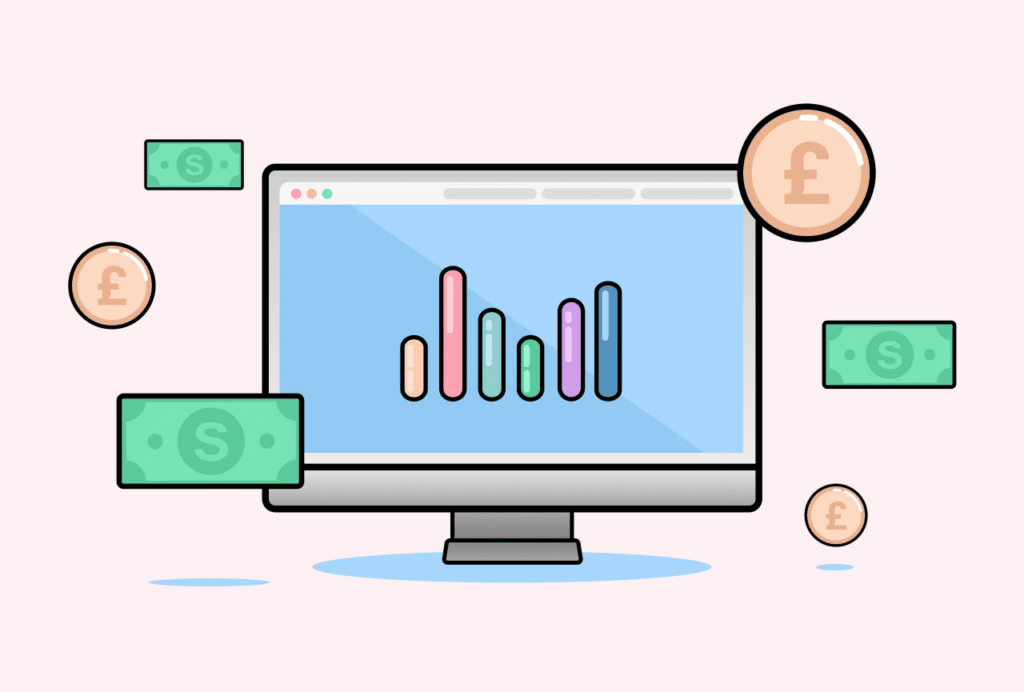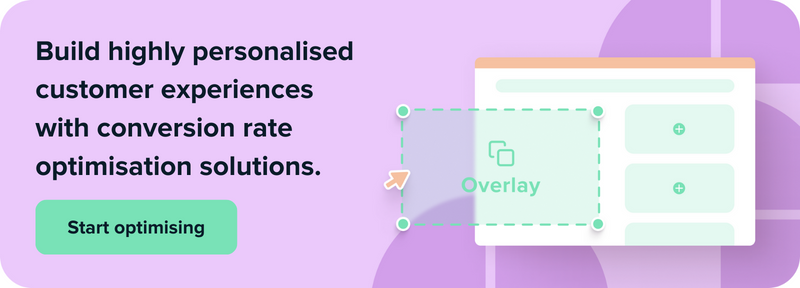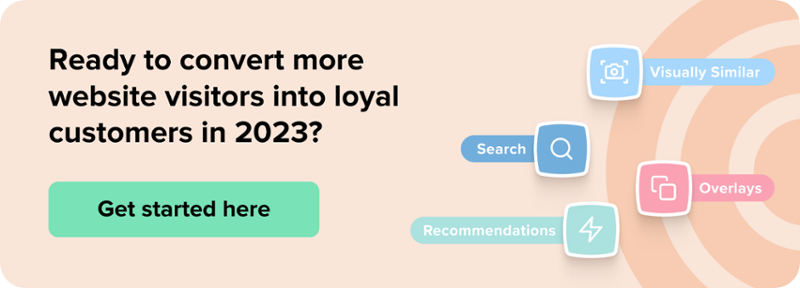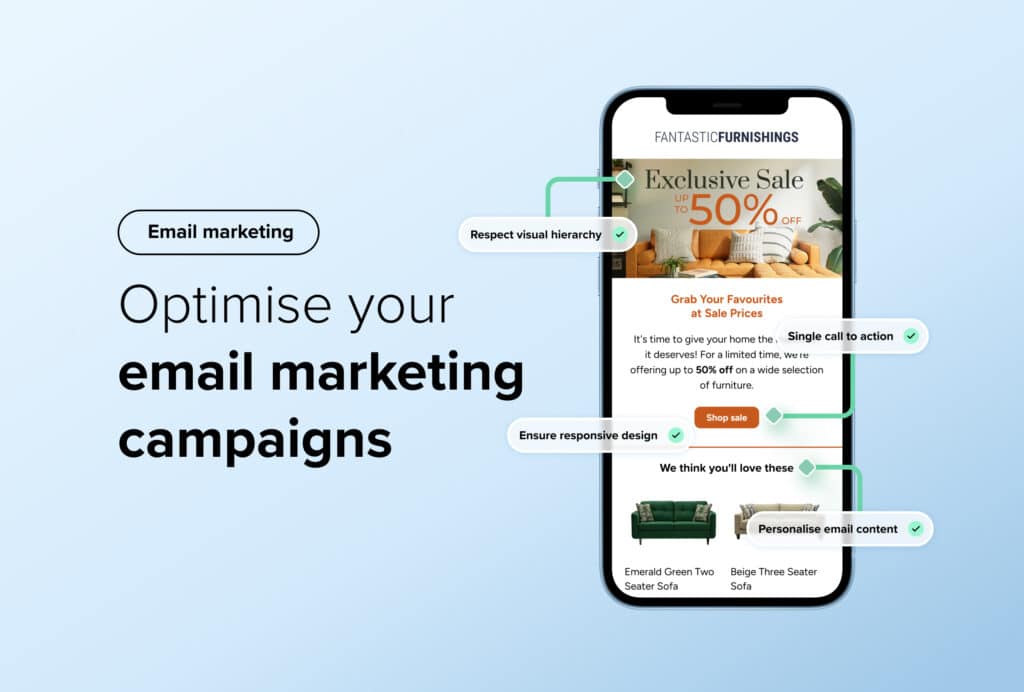7 Critical eCommerce Trends That Generate Profit
By Courtney O'Riordan • Last updated: Tuesday Apr 23rd, 2024

Tapping into the latest eCommerce trends can be a key profit driver for online retailers.
Crocs, the footwear brand, is no stranger to the success this can bring.
A 64% increase in profits and surge in popularity during a 3-month period was attributed to their participation in current trends, such as celebrity collaborations and personalisation options.
Your eCommerce business can take note.
Staying up to date with your customers’ evolving wants and needs allows you to compete in a space that is becoming notorious for its decreasing loyalty rates and increasing competition.
If you fail to implement trends quickly, you run the risk of losing out on profit, conversions and engaged customers.
How do trends benefit online retailers?
The way trends appear has changed. Traditionally, brands would dictate trends to customers.
With the rise of social media, modern consumers now dictate the trends they want brands to participate in, while making it easier for those brands to recognise this and react.
This is almost an ideal situation for retailers wanting to harness the increasing spending power of younger audiences.
Gen Z’s simultaneous emergence as consumers and trendsetters means they are shaping the future of eCommerce.
Keeping up with the latest online trends with the aim of attracting this audience means you’ll be sure to reap the rewards.
Their tech-savvy nature makes them susceptible to online strategies that will encourage them to make purchases.
Following trends helps you to attract the generation who are the future consumers whilst keeping existing consumers happy and improving the offerings of your eCommerce store.
A trend-following approach creates a seamless and engaging customer journey that encourages visitors to make first-time and repeat purchases – an essential for any retailer who wants to offset losses and increase profits.
7 eCommerce trends that generate profit
The increasing prominence of Gen Z customers and consistent shifts in consumer behaviour makes it difficult to keep up with the latest trends.
With this in mind, we’ve compiled a list of critical trends you should know about and have provided some insights on how you can leverage them to boost the profitability of your eCommerce store.
Related: 6 eCommerce Trends to Watch Out for in 2022

1. The rise of buy now pay later
The availability of a buy now pay later option at checkout is enough to create a successful conversion as opposed to an abandoned cart.
Recent years have seen FinTech companies, such as Klarna, transform the checkout process.
Young shoppers have been the most receptive to this trend with 42% of Gen Z currently using a BNPL service and contributing to the generational shift away from credit cards.
Buy now, pay later services have many attractive benefits for customers such as flexibility of payments and ease of returns.
The overall convenience of this payment method eliminates stress from the online shopping experience for many.
An example of this is a customer having the ability to make a return without having money ever leave their bank account.
With these benefits in mind, shoppers are actively seeking out this payment method at checkout.
eCommerce businesses can set themselves apart in a saturated market simply by having a BNPL payment option at checkout.
2. The demand for voice search is getting louder
You could have the speediest page load times and search results and it still won’t be enough to keep some online shoppers on-site.
As the ease and speed of voice search become integrated with everyday life, traditional text search becomes the slower, less convenient option.
Keeping customers engaged with eCommerce sites is tricky in a fast-paced society, but voice search is providing a means to do so.
This optimised form of searching for products and services is efficient, convenient and accessible.
The 4.2 billion digital voice assistants worldwide consist of trendsetters such as:
- Apple Siri
- Google Assistant
- Amazon Alexa
- Microsoft Cortana
Your voice commerce audience is growing: The accessibility to voice assistants and the prediction that voice commerce will grow by $80 billion per year by 2023 has created a growing audience ready and willing to convert on your site.
Customers want to be able to do their weekly food shop whilst washing their dishes. They want to be able to purchase their skincare products whilst chopping vegetables.
As they utilise voice search in this way, they will be able to receive the personalised experience that all consumers crave nowadays.
Over time, this way of searching shopper behaviour in a way that encourages meaningful recommendations and reminders.
Such features can inspire purchases, increase average order values and of course, create successful conversions that boost your overall profit.
What you can do:
Consider using Salesfire Search to rapidly integrate voice search on-site and benefit from immediate results.
3. AR enhances the experience of online shopping
AR (augmented reality) solves a previously unsolvable problem for eCommerce platforms: the inability to physically see products in person before buying.
Countless conversions have been lost due to 2D images being unable to provide a true representation of a product that will instil consumer confidence.
Create an engaging customer journey by introducing the possibility of viewing a product from the comfort of one’s own home, through their mobile phone..
For example, using AR to allow customers to digitally view a sofa in their home will allow you to innovatively communicate your product’s look and feel to customers.
Following in the footsteps of AR shopping trailblazers such as IKEA and Warby Parker will allow you to tap into the 71% of consumers who say they would shop more often if they used AR.
Enhancing the customer journey in this way increases session times through product engagement, customer satisfaction, loyalty, and conversion rates, all while reducing returns.
In addition to the broader benefits of AR, having it as standard on your site will attract lucrative Gen Z shoppers who are already comfortable using similar tech on social media platforms such as Snapchat.
Pro tip: Optimising the customer journey through AR to gain increased conversions helps to create excellent experiences that yield up to 40% more revenue.

4. Chatbots have entered the conversation
Picture this. You’re in a brick-and-mortar store searching for an item. You become frustrated because you can’t find it. You approach a sales assistant who guides you to the product. You make your purchase and leave.
Now, let’s put that exact scenario in an eCommerce context.
After a few clicks and failed search results, you can’t find the product you wanted to buy. You have no choice but to exit the site.
Thanks to the chatbot trend, online shopping no longer falls victim to increased bounce rates due to failed product discovery experiences.
How chatbots can benefit your business:
- Contribute to successful conversions: Providing helpful information at all times of day prevents visitors from leaving your site.
- Boost your AOV: Offering meaningful recommendations inspires additional purchases
- Provide customer support: By stimulating conversation, you mimic in-person sales assistance.
Chatbots are capable of providing these services as they utilise previous customer data to create personalised experiences.
Integrating artificial intelligence on your site in this way allows you to compete with online retail giants, such as Amazon, who have made these services standard.
Suggesting recommendations or answering frequently asked questions in an instant provides a level of customer service that leads to completed purchases, as customers feel well looked-after.
What you can do:
Introduce complete CRO solutions, such as a Digital Assistant, to support the most influential areas of the customer journey, increase eCommerce sales, and prompt quicker conversions.
5. D2C is driving sales
eCommerce has experienced unprecedented growth in recent years.
As much as this has had a positive impact on eCommerce brands, it also has created a level of unpredictability as we continue to head into uncharted territory,
The D2C model (direct to consumers) gives online retailers control of their stores in a way that is more profitable and reactive than traditional business models.
As the name suggests, D2C is the process of selling a product directly to the buyer from their own site, thus eliminating the need for third-party involvement (eg. distributors, stockists.)
This is made possible thanks to innovative tech and eCommerce platforms such as Shopify and BigCommerce.
Empowering retailers to sell their products and services directly allows them to compete much more effectively and cement their place in the market.
How the D2C model boosts profits:
- Faster sales: Products can be sold almost immediately after production
- Eliminates the middleman: Doing this avoids markups and reduces operational costs
- Honest, real-time customer feedback: A way for retailers to make informed decisions for the benefit of their customers and sales
- Enhanced eCommerce customer experiences: Helps to encourage loyalty to your site
Pro tip: Consider using a headless commerce platform to support your D2C strategy. It leads to deeper engagement with your customers whilst creating first-party data, an essential considering the limit on third-party data.
6. Mimic the magic of social media
eCommerce retailers are all too aware of the influence of social media and the increasing number of platforms exploring social commerce.
With a consistent and rising role in how consumers shop, using personalisation tactics allows you to follow this trend on your eCommerce site.
Thanks to the hyper-personalised feed of social platforms as seen on Instagram and TikTok, users have come to expect a bespoke experience whilst online shopping.
Making web pages relevant to individuals with Personalised Recommendations mimics this experience.
A D2C model makes it easier to build personalised shopping experiences.
After all, access to first-party data allows you to tailor your content to your customer’s needs whilst delivering personalised recommendations and interactions at every influential step of the customer journey.
What you can do: Use Recommendations to upsell products based on a customer’s basket thanks to the intelligence of machine learning.
7. Keep your eye on visual search
We’ve long been forecasting the rise of visual search and we will continue to do so.
Consumers are still prioritising personalisation when it comes to their list of wants and needs while shopping online.
Visual search provides the unique opportunity to give each and every customer just that while pushing them through the sales funnel.
Shoppers can pull images from sources like Facebook and Instagram and use these as search queries to connect them with visually similar products.
Recognising social media as a vital step in the product discovery experience and supporting it through an optimised search solution helps to create a seamless user experience.
This on-site feature will put you in good favour with the lucrative Gen Zers who actively seek out visual inspiration.
Empowering this audience to find accurate results allows you to engage them with your products and explore your site.
Pro tip: Create a smooth and seamless search experience to deliver customers directly to your checkout with Visually Similar Search by Salesfire.
With Salesfire, you’ll always be ahead of the curve
The nature of trends means that they are constantly evolving and changing.
All points discussed above will prove beneficial for any eCommerce brand hoping to see immediate and long-term results.
To maintain your success and continue to increase profit, it will be important to track emerging trends, keeping your finger on the pulse of what your customers want.
Tracking and benchmarking tools such as TrendDesk provide valuable analysis and insights into industry-specific data.
With this knowledge at your fingertips for free, you can make decisions on which trends will work for your business within your sector.

See how Salesfire can help you optimise your product discovery experience, email one of our experts at enquiries@salesfire.com or book a free demo of our personalisation tools.



